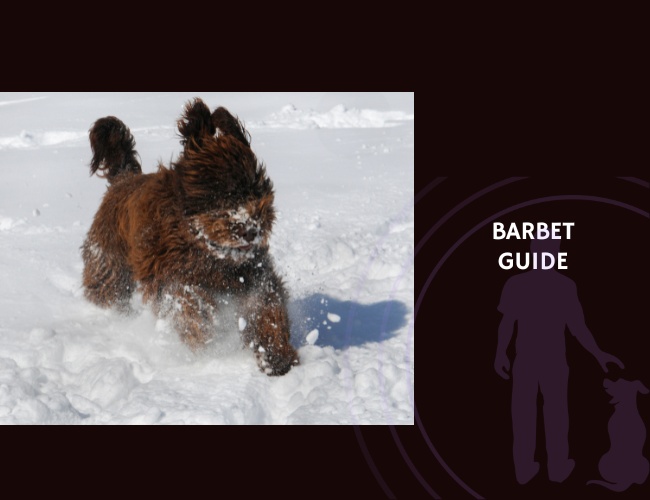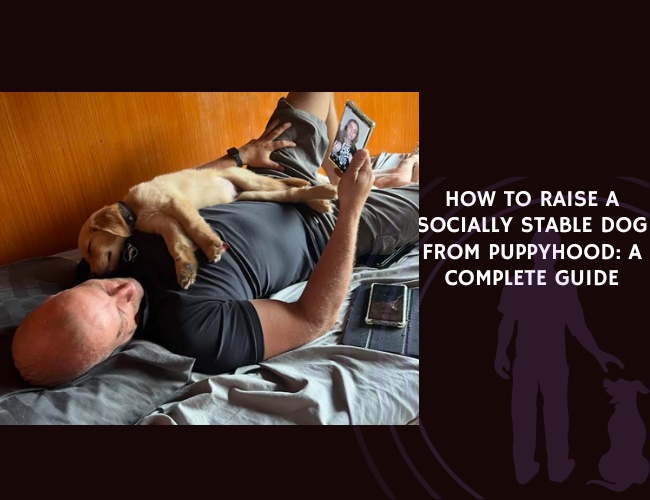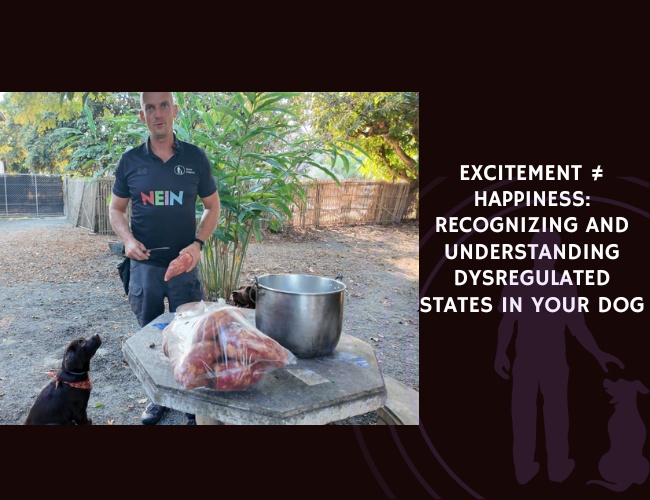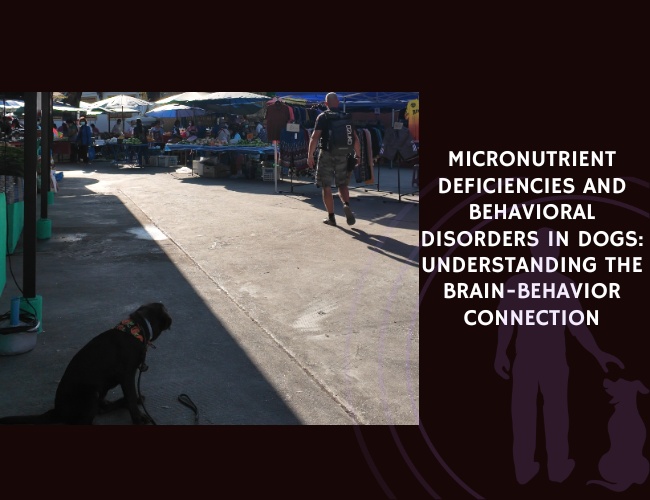Have you ever wondered what it would be like to share your life with a dog that carries centuries of French heritage in their distinctive curly coat? The Barbet, with their charming beard and gentle eyes, represents one of Europe’s most fascinating yet rare canine treasures. This medium-sized French water dog doesn’t just bring ancient bloodlines into your home—they bring a unique blend of working intelligence and heartwarming companionship that has captivated families for over 600 years.
The Barbet’s story begins in the misty marshlands and coastal waters of medieval France, where these “mud dogs” earned their reputation as fearless retrievers of waterfowl. Their name, derived from the French word “barbe” meaning beard, perfectly captures their most distinctive feature—that magnificent facial hair that gives them an almost human-like expressiveness. Today, with fewer than 2,000 Barbets registered worldwide, choosing this breed means becoming part of a dedicated community working to preserve something truly special.
What makes the Barbet exceptional isn’t just their rarity or their remarkable swimming abilities. It’s their capacity to seamlessly transition from the working field to the family living room, bringing the same enthusiasm to a game of fetch with your children as they once brought to retrieving ducks for French hunters. If you’re considering welcoming a Barbet into your life, you’re not just choosing a pet—you’re becoming a guardian of living history. 🐾
Character & Behavior: The Heart of the Barbet
Historical Foundations Shape Modern Temperament
Understanding your Barbet’s behavior starts with appreciating their remarkable heritage. For centuries, these dogs worked alongside French hunters in challenging wetland environments, developing traits that make them exceptional modern companions. Their historical role as “Mud Dogs” wasn’t just about retrieving waterfowl—it required intelligence, adaptability, and an unshakeable bond with their human partners.
This working background explains why your Barbet approaches life with such enthusiasm and problem-solving ability. They were bred to think independently while remaining utterly devoted to their handler’s goals. When you watch your Barbet assess a new situation or figure out how to retrieve a toy from under the couch, you’re witnessing hundreds of years of selective breeding for intelligence and resourcefulness.
The breed’s water-working heritage also created dogs with remarkable emotional stability. Working in unpredictable marsh conditions required dogs that could remain calm under pressure while maintaining their gentle nature around families. This is why modern Barbets handle stress so well and adapt beautifully to family life with children and other pets.
Core Behavioral Traits: Intelligence Meets Gentle Strength
Your Barbet’s intelligence manifests in ways that might surprise you. These aren’t dogs that simply follow commands—they’re thinking partners who quickly understand your routines, anticipate your needs, and solve problems with impressive creativity. Many Barbet owners describe their dogs as almost telepathic in their ability to read human emotions and respond appropriately.
This intelligence comes with high trainability that makes them excellent companions for both novice and experienced dog owners. They excel at learning complex sequences of behaviors and can master advanced training concepts that challenge other breeds. Their quick learning ability means they pick up both good habits and bad ones rapidly, making consistent, positive training essential from day one.
What truly sets Barbets apart is their remarkable adaptability. Whether you live in a city apartment or a countryside estate, these dogs adjust their energy and behavior to match your lifestyle. They’re equally content accompanying you on weekend hiking adventures or settling quietly beside you during evening reading sessions. This versatility stems from generations of dogs who needed to work intensively during hunting season while being calm family companions during off-seasons.
Social Bonding: The Barbet’s Gift for Connection
The depth of bond a Barbet forms with their family is truly extraordinary. These aren’t independent dogs who happen to live in your home—they become integral parts of your family structure, forming distinct relationships with each family member. Your Barbet might be playfully energetic with the teenagers, gentle and patient with small children, and calmly companionable with elderly family members.
Their social intelligence extends beyond the family unit. Barbets are naturally friendly toward strangers, though they take time to assess new situations before fully engaging. This reserved initial approach isn’t shyness—it’s thoughtful evaluation. Once they determine a person or situation is safe and positive, they open up with warmth and enthusiasm that’s genuinely heartwarming.
With proper socialization, Barbets integrate beautifully with other pets. Their hunting background might suggest high prey drive, but these dogs were bred to work cooperatively, not to hunt independently. They typically show more interest in befriending the family cat than chasing it, and they often become gentle leaders in multi-dog households.
Water Affinity: Understanding Your Barbet’s Deepest Instinct
The moment your Barbet encounters water, you’ll witness something magical. Their entire demeanor changes as ancient instincts awaken. Those webbed paws weren’t just evolutionary accidents—they’re perfectly designed swimming tools that turn your dog into an aquatic athlete. The distinctive beard and low-set ears that give Barbets their charming appearance also serve practical purposes, helping them navigate through reeds and marsh grass while keeping water out of their ears.
This water affinity goes beyond mere enjoyment—it’s a fundamental part of their being. Many Barbet owners discover their dogs prefer drinking from outdoor water sources over indoor bowls and will happily splash through puddles that other dogs carefully avoid. Understanding this natural inclination helps you provide activities that truly fulfill your dog’s deepest behavioral needs.
However, their love of water requires thoughtful management. That magnificent coat can hold substantial amounts of water and mud, and many Barbets seem to have an magnetic attraction to the muddiest possible swimming holes. Embracing this tendency rather than fighting it makes life much more enjoyable for everyone involved. 🧡
Vocalization & Communication: Understanding How Your Barbet “Talks”
The Language of the French Water Dog
Your Barbet communicates through a sophisticated system that goes far beyond simple barking. These intelligent dogs develop complex communication patterns that reflect their working heritage and deep emotional intelligence. Understanding your Barbet’s vocal and physical language strengthens your bond and helps you respond appropriately to their needs.
Unlike breeds developed for guarding, Barbets weren’t bred to be alarm dogs, so excessive barking isn’t typical. When they do vocalize, it’s usually meaningful communication. A short, sharp bark might indicate excitement about going outside, while a longer, more melodious sound often expresses greeting joy when you return home. Some Barbets develop almost conversational vocalizations, especially when they want to share their enthusiasm about upcoming activities.
Their working background created dogs skilled at reading human body language and responding to subtle cues. Your Barbet likely notices changes in your routine before you consciously recognize them yourself. They might begin showing excitement for your morning walk before you’ve even reached for the leash, or settle into calm behavior when they sense you’re having a difficult day.
Physical communication in Barbets is equally expressive. Their tail carriage tells detailed stories about their emotional state. A high, gently wagging tail indicates confident happiness, while a lower wag might suggest cautious friendliness. The distinctive Barbet “smile”—a relaxed, open-mouthed expression—is one of their most endearing communication tools, clearly conveying contentment and affection.
Behavioral Signals and What They Mean
Learning to read your Barbet’s behavioral signals enhances your relationship and helps you provide better care. When your Barbet brings you their favorite toy, they’re not just asking to play—they’re inviting you to share in something that brings them joy. This behavior reflects their deep desire to include you in their activities and experiences.
The famous Barbet “nudge” is another distinctive communication method. These dogs often gently push their heads against your hand or leg to request attention, comfort, or interaction. Unlike more demanding breeds that might jump or bark for attention, Barbets typically use these gentler approaches that respect your space while clearly expressing their needs.
Watch for the subtle signs of mental engagement in your Barbet. When they’re processing new information or trying to understand a situation, you’ll often see their ears prick forward slightly, their head tilt characteristically, and their eyes focus intently. These moments of concentration show their intelligence at work and indicate perfect times for training or teaching new concepts.
Training & Education: Unlocking Your Barbet’s Potential
The Foundation: Why Positive Reinforcement Is Essential
Training your Barbet successfully requires understanding their sensitive, intelligent nature. These dogs possess what trainers call “soft temperaments,” meaning harsh corrections or negative training methods can shut them down completely. When a Barbet feels their handler is unhappy or frustrated, they often respond by withdrawing rather than increasing effort, making positive reinforcement not just preferable but absolutely essential.
Your Barbet’s eagerness to please combined with their intelligence creates ideal training conditions when approached correctly. They genuinely want to understand what you’re asking and take pride in performing tasks correctly. This intrinsic motivation means that training sessions become collaborative experiences rather than battles of will.
The key to successful Barbet training lies in keeping sessions engaging and varied. These intelligent dogs bore quickly with repetitive drilling, so successful trainers constantly introduce new elements, challenges, and rewards. A typical successful training session might include basic obedience work, a short trick-learning segment, and a problem-solving game, all woven together with enthusiasm and positive energy.
Consistency in commands and expectations provides the structure your Barbet needs to succeed. While they’re adaptable dogs, they learn most effectively when everyone in the family uses the same verbal cues and maintains similar standards. This consistency doesn’t mean rigidity—it means creating clear, understandable patterns your dog can rely on.
Mental Stimulation: Feeding Your Barbet’s Brilliant Mind
Your Barbet’s intelligence requires regular mental exercise just as surely as their body needs physical activity. Without adequate mental stimulation, even well-exercised Barbets can develop behavioral issues including destructive chewing, excessive attention-seeking, or restless behavior. Fortunately, providing mental challenges for these dogs is both easy and incredibly rewarding.
Puzzle toys and interactive feeders transform basic activities like eating into engaging mental exercises. Your Barbet will spend time figuring out how to access their food, providing both mental stimulation and slowing down fast eaters. Rotating different puzzle types prevents habituation and keeps the challenge fresh and interesting.
Training new tricks and commands provides excellent mental exercise while strengthening your bond. Barbets excel at learning complex behavior chains and can master impressive sequences of actions. Teaching your dog to retrieve specific items by name, perform elaborate tricks, or navigate obstacle courses engages their problem-solving abilities while building confidence.
Scent work activities tap into your Barbet’s hunting heritage while providing mental stimulation that can be practiced indoors or outdoors. Simple games like hiding treats around the house or teaching them to find specific family members by scent engage their natural abilities while providing satisfying mental challenges.
Early Socialization: Building Confidence for Life
Proper socialization during your Barbet’s critical development period (8-16 weeks) shapes their adult personality and determines their comfort level with the world around them. These naturally friendly dogs benefit enormously from positive exposure to various people, animals, environments, and experiences during this crucial window.
The goal of socialization isn’t just exposure—it’s creating positive associations with new experiences. Each new encounter should be paired with good things happening, whether that’s treats, praise, play, or simply your calm, confident presence. This approach builds a Barbet who approaches new situations with curiosity and confidence rather than fear or uncertainty.
Controlled socialization experiences work better than overwhelming encounters. Introducing your young Barbet to one calm, friendly adult dog teaches different lessons than exposing them to a chaotic dog park full of excited animals. Thoughtful socialization creates positive building blocks that develop into stable, confident adult behavior.
Remember that socialization continues throughout your Barbet’s life, though it’s most crucial during puppyhood. Regular exposure to new experiences, people, and situations helps maintain their social confidence and adaptability. Adult Barbets who received excellent early socialization typically remain open to new experiences throughout their lives.

Breed-Specific Training Activities
Water retrieving represents the perfect marriage of your Barbet’s natural abilities and training potential. Even if you’re not a hunter, teaching water retrieval provides incredible satisfaction for your dog while building confidence and physical fitness. Start with shallow water introductions, progress to retrieving floating toys, and gradually build complexity as your dog’s skills develop.
The beauty of water training lies in its low-impact nature and full-body engagement. Swimming exercises every muscle group while being gentle on joints, making it ideal exercise for Barbets of all ages. Many dogs who struggle with traditional land-based exercise programs thrive in water-based activities.
Agility training showcases your Barbet’s natural athleticism while providing excellent mental and physical exercise. These dogs often excel at agility work because it combines problem-solving, physical challenges, and close cooperation with their handler. Even basic agility work in your backyard can provide wonderful enrichment and bonding opportunities.
Scent detection work honors your Barbet’s hunting heritage while providing engaging mental exercise. Teaching your dog to locate specific scents or objects challenges their mind while tapping into deeply satisfying natural behaviors. This type of work can be adapted for any living situation and provides excellent rainy-day activities. 🐾
Performance & Activities: Unleashing Your Barbet’s Athletic Potential
Natural Athleticism and Modern Applications
Your Barbet’s athletic abilities extend far beyond their famous swimming prowess. These dogs possess a rare combination of strength, agility, and endurance that makes them excel in numerous canine sports and activities. Their medium size provides the perfect balance—large enough for power and stability, yet agile enough for quick direction changes and complex maneuvers.
The breed’s historical work required dogs capable of sustained effort in challenging conditions, creating modern Barbets with impressive stamina and work ethic. When properly conditioned, these dogs can participate in demanding activities for extended periods while maintaining their enthusiasm and focus. This endurance, combined with their natural eagerness to please, makes them exceptional partners in competitive and recreational activities alike.
What truly sets Barbets apart in performance contexts is their thinking approach to challenges. Rather than simply powering through obstacles or activities, they assess situations and adapt their approach accordingly. This intelligence makes them particularly successful in sports that require strategy and problem-solving, not just physical ability.
Water Sports: Where Barbets Truly Shine
Dock diving represents perhaps the perfect sport for showcasing your Barbet’s natural abilities. These dogs approach the dock with confidence, launch themselves into the air with impressive power, and hit the water with the enthusiasm of athletes in their element. Many Barbets naturally achieve impressive distances and heights with minimal training, though proper conditioning and technique refinement can enhance their performance significantly.
The joy Barbets experience in dock diving goes beyond simple exercise—it’s the fulfillment of centuries-old instincts. Watching your dog’s transformation from everyday companion to focused athlete as they approach the dock provides insight into the remarkable heritage these dogs carry. Even Barbets who don’t compete in formal dock diving events benefit enormously from recreational dock jumping and water retrieving.
Swimming provides the ideal exercise for Barbets of all ages and fitness levels. The low-impact nature of water exercise makes it perfect for young dogs whose joints are still developing, adult dogs maintaining peak condition, and senior dogs managing age-related mobility issues. Regular swimming builds cardiovascular fitness, muscle tone, and mental satisfaction in ways that land-based exercise cannot match.
Land-Based Athletic Pursuits
Agility work reveals your Barbet’s remarkable athletic intelligence and adaptability. These dogs approach agility obstacles with careful assessment followed by confident execution. They rarely rush through courses blindly but instead demonstrate the thinking athlete’s approach—analyzing challenges and adjusting their technique accordingly.
The variety offered by agility training perfectly matches your Barbet’s need for mental stimulation combined with physical exercise. Each training session can introduce new obstacles, different course layouts, or refined techniques, keeping your dog engaged and challenged. Many Barbets who struggle with repetitive exercise routines thrive in agility work because it provides constant novelty and challenge.
Rally obedience combines your Barbet’s natural trainability with their need for mental engagement. This sport requires dogs to perform various obedience exercises while navigating a course marked with signs indicating specific behaviors. The format allows for more natural interaction between dog and handler than traditional obedience work, suiting the Barbet’s collaborative nature perfectly.
Hiking and trail activities provide excellent outlets for your Barbet’s endurance and natural curiosity. These dogs typically excel as hiking companions because they maintain steady paces over long distances while remaining alert and engaged with their surroundings. Their water affinity means they’re always ready to cool off in streams or lakes encountered along trails.
Competitive Sports and Recognition
Barbets are increasingly making their mark in various competitive venues as more people discover their athletic potential. Their intelligence and trainability make them quick learners in new sports, while their gentle temperament makes them wonderful ambassadors for their breed at events and competitions.
The breed’s versatility means individual dogs can excel in multiple sports rather than specializing in just one area. Many successful Barbet competitors participate in water sports during warmer months and land-based activities year-round, keeping their dogs engaged and physically fit throughout all seasons.
What makes Barbets particularly appealing in competitive contexts is their sportsmanlike attitude. These dogs compete with enthusiasm while maintaining their naturally friendly demeanor toward other dogs and handlers. They celebrate victories modestly and handle disappointments gracefully, making them ideal representatives of positive sportsmanship.
Nutritional Recommendations: Fueling Your Barbet’s Active Life
Understanding Energy and Macronutrient Needs
Your Barbet’s nutritional requirements reflect their athletic heritage and active lifestyle. These working dogs need balanced nutrition that supports their energy needs while maintaining optimal body condition throughout their lives. The foundation of excellent Barbet nutrition lies in understanding how their unique characteristics influence their dietary needs.
Protein serves as the cornerstone of your Barbet’s diet, supporting muscle development, repair, and maintenance essential for their active lifestyle. High-quality animal proteins provide the complete amino acid profiles these dogs need for optimal health. Look for protein sources like salmon, chicken, lamb, and other whole meats that offer excellent bioavailability and palatability.
Adult Barbets typically thrive on diets containing 22-25% high-quality protein, while growing puppies require 28-30% to support their rapid development. The key lies not just in protein quantity but in quality—easily digestible proteins that your dog’s system can efficiently utilize for muscle maintenance and energy production.
Fat requirements for Barbets deserve special attention because these nutrients support multiple crucial functions. Beyond providing concentrated energy for their active lifestyle, fats support skin and coat health, cognitive function, and overall cellular health. The breed’s distinctive curly coat particularly benefits from adequate essential fatty acid intake.
Essential Fatty Acids for Optimal Health
Your Barbet’s magnificent coat requires specific nutritional support to maintain its distinctive texture and healthy appearance. Omega-3 fatty acids, particularly EPA and DHA from marine sources, provide anti-inflammatory benefits while supporting coat quality and skin health. These nutrients prove especially valuable for Barbets who spend significant time in water, as they help maintain skin integrity and coat condition despite frequent wetting and drying cycles.
Omega-6 fatty acids, when properly balanced with omega-3s, support skin barrier function and contribute to coat luster and texture. The ideal omega-6 to omega-3 ratio falls between 5:1 and 10:1, though many commercial diets contain ratios much higher than optimal. Supplementing with high-quality fish oil can help achieve better balance while providing additional health benefits.
The anti-inflammatory properties of properly balanced essential fatty acids extend beyond coat health to support joint function, cardiovascular health, and cognitive function. For active Barbets participating in demanding physical activities, these anti-inflammatory benefits can contribute significantly to long-term joint health and overall wellbeing.
Natural sources of essential fatty acids include fatty fish like salmon and sardines, flaxseed, and specifically formulated fish oil supplements. When choosing supplements, look for products that provide guaranteed potency and have been tested for contaminants like heavy metals and PCBs.
Joint Support and Mobility Nutrition
Your Barbet’s active lifestyle places demands on their musculoskeletal system that nutritional support can help address proactively. While these dogs don’t typically suffer from severe joint issues, their athletic activities and genetic predisposition to hip dysplasia make joint health nutrition particularly important throughout their lives.
Glucosamine and chondroitin supplementation provides building blocks for cartilage maintenance and repair. These nutrients work synergistically to support joint fluid production and cartilage integrity, potentially slowing age-related joint changes and supporting comfort during high-activity periods.
Maintaining optimal body weight represents perhaps the most crucial nutritional factor for joint health. Excess weight places additional stress on joints, particularly during high-impact activities like jumping and running. Regular body condition scoring helps ensure your Barbet maintains ideal weight throughout their life.
Anti-inflammatory nutrients including omega-3 fatty acids, antioxidants like vitamins C and E, and compounds found in certain herbs and spices can provide additional joint support. Turmeric, for example, contains curcumin, which has demonstrated anti-inflammatory properties, though it should be used thoughtfully and in appropriate amounts.
Feeding Strategies for Different Life Stages
Puppy nutrition requires careful attention to support rapid growth while preventing developmental orthopedic problems. Young Barbets benefit from controlled feeding schedules that provide adequate nutrition without promoting excessive growth rates that can stress developing joints and bones.
Feeding three to four smaller meals daily helps maintain stable blood sugar levels and supports proper digestion in growing puppies. This schedule also provides more opportunities for positive training interactions around meal times and helps establish good eating habits.
Adult Barbets typically thrive on twice-daily feeding schedules that provide consistent energy throughout the day. This approach helps prevent bloat, maintains stable energy levels, and allows for better portion control than single large meals.
Senior Barbets may benefit from adjusted feeding approaches that account for changing metabolism, potential dental issues, and reduced activity levels. Smaller, more frequent meals can improve digestibility, while softer textures may accommodate dental sensitivities.
Hydration and Special Considerations
Your water-loving Barbet faces unique hydration challenges that require thoughtful management. Dogs who spend significant time swimming may drink less fresh water than needed, particularly if they’re inadvertently consuming pool or lake water during activities. Ensuring access to clean, fresh water at all times becomes even more crucial for active water dogs.
Post-swimming nutrition timing deserves consideration for Barbets who participate regularly in water activities. Light snacks or meals immediately after intense swimming sessions can help maintain energy levels and support recovery, while larger meals are better offered after your dog has had time to rest and dry off.
Some Barbets develop sensitivities to certain ingredients or environmental allergens that can affect their skin, coat, or digestive systems. Working with your veterinarian to identify and eliminate triggering ingredients helps maintain optimal health and comfort. Common allergens include certain proteins, grains, and environmental factors that may require dietary modifications. 🧡
Gentle. Adaptable. Historic.
Heritage defines behavior. Centuries as France’s marshland retrievers shaped the Barbet into a calm, intelligent partner who thrives in both work and family life. Their balanced temperament reflects generations of dogs trusted in unpredictable environments.
Intelligence fuels versatility. Quick to learn and eager to please, Barbets adapt seamlessly to new routines, environments, and challenges. They carry equal talent for advanced training and quiet companionship, making them uniquely suited to diverse lifestyles.
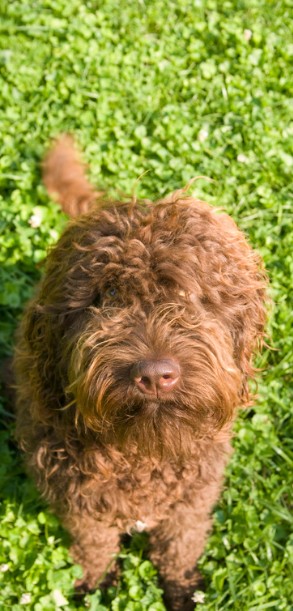
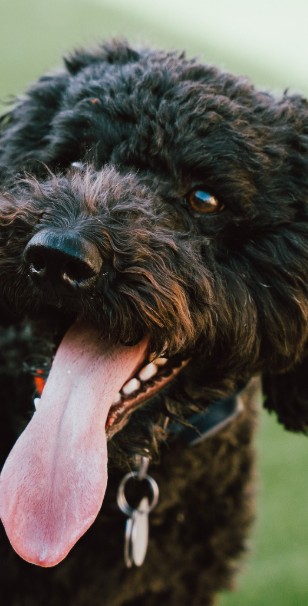
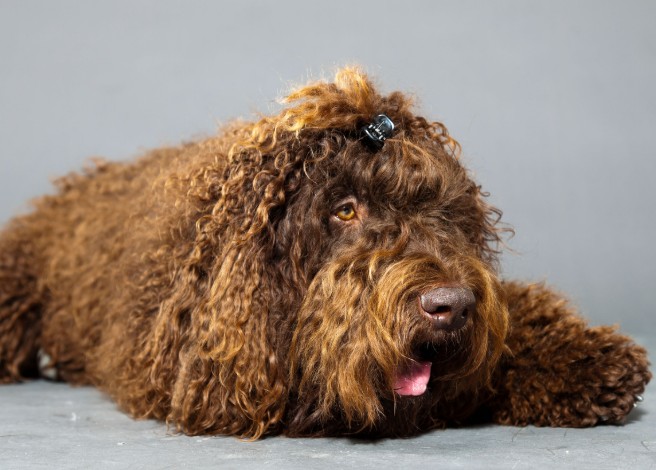
Connection runs deep. More than pets, Barbets weave themselves into the fabric of family life with emotional intelligence and warmth. Their bonds reflect loyalty, patience, and a rare capacity for true partnership.
Health Concerns: Protecting Your Barbet’s Wellbeing
Genetic Predispositions and Screening
Understanding your Barbet’s genetic health predispositions empowers you to make informed decisions about preventive care and lifestyle management. While Barbets are generally healthy dogs, their limited gene pool and specific breeding history create certain health considerations that responsible owners should understand and monitor throughout their dog’s life.
Hip dysplasia represents the most significant orthopedic concern in the breed, though the incidence remains lower than in many similar-sized breeds. This condition involves abnormal development of the hip joint, where the ball and socket don’t fit together properly, potentially leading to arthritis and mobility issues over time. The complex inheritance pattern involves multiple genes interacting with environmental factors, making breeding decisions crucial for maintaining breed health.
Elbow dysplasia, while less common than hip dysplasia in Barbets, involves abnormal development of the elbow joint and can cause lameness and arthritis. Both hip and elbow dysplasia can be screened through radiographic evaluation, and reputable breeders should provide health clearances for breeding dogs to help reduce the risk of these conditions in offspring.
Progressive breeding programs focus on maintaining genetic diversity while selecting against known health issues. When choosing a Barbet puppy, asking for health clearances on both parents and understanding the health history of the breeding line helps you make informed decisions about your dog’s likely health trajectory.
Eye Health and Vision Care
Your Barbet’s eyes require regular attention and monitoring throughout their life. The breed’s predisposition to certain eye conditions makes routine eye examinations an important part of preventive healthcare. Early detection of eye problems allows for better management and can help preserve vision and comfort.
Cataracts, which cause clouding of the lens and can lead to vision impairment, occur in some Barbets. While cataracts can develop at any age, they’re more common in older dogs. Regular veterinary eye examinations can detect early cataract formation and help determine appropriate management strategies.
Entropion, a condition where the eyelid rolls inward causing eyelashes to irritate the cornea, can cause significant discomfort and potential vision problems if left untreated. This condition can be corrected surgically when necessary, and early intervention typically provides excellent outcomes.
Progressive retinal atrophy (PRA), while less common in Barbets than some breeds, represents a serious inherited condition that causes gradual vision loss leading to blindness. Genetic testing can identify carriers of PRA genes, helping breeders make informed mating decisions to reduce the risk of this condition.
Skin and Coat Health Management
Your Barbet’s dense, curly coat creates a unique microenvironment that requires thoughtful management to prevent skin issues. The combination of their coat texture, water activities, and genetic factors can predispose some Barbets to specific dermatological challenges that proper care can help prevent or manage.
Hot spots, also known as acute moist dermatitis, can develop quickly in Barbets, particularly during warm, humid weather or after swimming activities. These painful, inflamed areas of skin require prompt attention to prevent spreading and provide comfort. Proper coat drying after water activities and regular grooming to prevent matting help reduce hot spot risk.
Allergic dermatitis can affect some Barbets, manifesting as itchy, inflamed skin that may be triggered by environmental allergens, food ingredients, or contact substances. Working with your veterinarian to identify triggers and develop management strategies helps maintain your dog’s comfort and skin health.
The breed’s love of water and mud requires careful balance between allowing natural behaviors and maintaining skin health. Regular grooming, proper drying techniques, and monitoring for any changes in skin condition help prevent problems while allowing your Barbet to enjoy their favorite activities.
Ear Care and Infection Prevention
Your Barbet’s ear structure and water-loving nature create increased risk for ear infections that require proactive management throughout their life. The combination of floppy ears, dense hair growth in the ear canals, and frequent water exposure creates ideal conditions for bacterial and yeast growth if not properly managed.
Regular ear cleaning with veterinary-approved cleaners helps remove debris, excess wax, and moisture that can contribute to infection development. The frequency of cleaning depends on your dog’s activities and individual needs, but many water-active Barbets benefit from cleaning after each swimming session.
Proper ear drying after water activities is crucial for preventing infection. Gentle drying with towels followed by air drying helps remove excess moisture from the ear canals. Some owners find that using a blow dryer on cool setting helps ensure thorough drying, though this requires patient training to help your dog accept the process.
Monitoring for signs of ear problems including odor, discharge, excessive scratching, head shaking, or apparent discomfort helps identify issues early when they’re most treatable. Many ear infections respond well to appropriate treatment when caught early but can become chronic problems if neglected.
Neurological Health Considerations
Epilepsy represents a concern in some Barbet lines, though the overall incidence remains relatively low compared to many breeds. This neurological condition involves recurrent seizures that can range from mild, brief episodes to more severe convulsions. Understanding seizure recognition and management helps owners provide appropriate care and work effectively with veterinary professionals.
Idiopathic epilepsy, the most common form in dogs, typically develops between 6 months and 6 years of age and involves seizures without an identifiable underlying cause. While concerning for owners, many dogs with well-managed epilepsy live normal, happy lives with appropriate veterinary care and lifestyle modifications.
Seizure triggers can include stress, excitement, changes in routine, or environmental factors. Keeping a seizure diary helps identify potential patterns and triggers that might be modified to reduce seizure frequency. Creating a calm, consistent environment can benefit dogs with epilepsy while maintaining their quality of life.
Working with veterinary neurologists when needed provides access to the most current treatment options and management strategies. Anti-seizure medications can be highly effective in controlling seizures, though they require careful monitoring and adjustment to maintain effectiveness while minimizing side effects. 🐾

Lifestyle & Environment: Creating the Perfect Home for Your Barbet
Exercise Requirements: More Than Just Physical Activity
Your Barbet’s daily exercise needs encompass far more than simple physical exertion—they require activities that engage their intelligence, satisfy their natural instincts, and strengthen your bond together. Understanding these multifaceted requirements helps you provide a truly fulfilling lifestyle that keeps your dog physically fit, mentally stimulated, and emotionally satisfied.
The foundation of excellent Barbet exercise involves consistent daily activity lasting 45-90 minutes, depending on your dog’s age, fitness level, and individual energy. This time should include varied activities rather than repetitive routines, as these intelligent dogs thrive on novelty and mental challenge combined with physical effort.
Morning exercise sessions often work best for Barbets because they provide an outlet for overnight energy buildup and establish a positive tone for the day. A brisk walk or jog combined with training exercises creates the perfect start, while evening sessions can focus more on relaxation and bonding activities.
Weather considerations play important roles in exercise planning, though Barbets adapt well to various conditions. Their thick coats make them comfortable in cool and cold weather but require careful management during hot periods. Early morning or evening exercise during summer months helps prevent overheating while maintaining fitness routines.
Water Activities: Honoring Ancient Instincts
Providing regular access to water activities transforms exercise from obligation into pure joy for most Barbets. These dogs don’t simply enjoy swimming—they need it to feel complete and fulfilled. The physical benefits of swimming include full-body muscle engagement, cardiovascular conditioning, and joint-friendly exercise that supports long-term mobility.
Natural swimming opportunities provide the richest experiences for your Barbet. Lakes, ponds, slow-moving rivers, and ocean areas (where safe) offer environmental complexity that engages all their senses while providing exercise. The varying depths, currents, and surfaces challenge their swimming abilities while satisfying their natural instincts.
Structured water activities can include retrieving games, dock diving practice, or simply supervised free swimming. Many Barbets enjoy underwater exploration, diving for toys or sticks in shallow areas. These activities provide mental stimulation while building confidence and physical fitness.
Safety considerations for water activities include ensuring water quality, monitoring for hazards like strong currents or dangerous wildlife, and providing adequate supervision. Teaching a reliable recall command before allowing off-leash water activities helps ensure your dog’s safety while maximizing their enjoyment.
Indoor Living and Environmental Enrichment
Creating an enriching indoor environment becomes particularly important for Barbets during weather that limits outdoor activities or for owners with demanding schedules. These intelligent dogs need mental stimulation even when physical exercise is limited, making indoor enrichment crucial for preventing boredom and behavioral issues.
Interactive puzzle toys and food-dispensing devices transform basic activities like eating into engaging mental challenges. Rotating different puzzle types prevents habituation and maintains novelty. Many Barbets enjoy working for their food, and these activities provide satisfaction while supporting natural foraging behaviors.
Indoor training sessions can include trick learning, scent work, and obedience practice that maintains mental sharpness while strengthening your bond. Teaching complex behavior chains or new commands provides excellent mental exercise that can tire your dog as effectively as physical activity.
Creating varied indoor environments through furniture arrangements, different play areas, or access to different rooms prevents monotony and provides environmental enrichment. Some Barbets enjoy having “jobs” like carrying items between rooms or alerting to specific sounds, providing purpose and mental engagement.
Adaptation to Different Living Situations
Urban apartment living can work well for Barbets when their exercise and mental stimulation needs are consistently met. These adaptable dogs can thrive in smaller spaces if their owners commit to providing adequate outdoor activities and environmental enrichment. The key lies in understanding that space limitations must be compensated with increased effort in exercise and stimulation.
Suburban environments with yards provide excellent opportunities for Barbets, though secure fencing becomes essential given their athletic abilities and potential for wandering. Many Barbets are skilled climbers and jumpers, requiring fences of appropriate height and construction to ensure safety.
Rural settings often provide ideal environments for Barbets, offering natural swimming areas, large spaces for exercise, and fewer restrictions on activities. However, rural owners must consider wildlife interactions, property boundaries, and the need for socialization opportunities to maintain their dog’s social skills.
Climate adaptation strategies help Barbets thrive in various geographic locations. Their coats can be trimmed shorter in warm climates while growing longer for cold weather protection. Understanding your local climate patterns helps you adjust exercise routines, grooming schedules, and indoor/outdoor activity balance throughout the year.
Daily Routine Optimization
Establishing consistent daily routines provides structure that Barbets appreciate while ensuring their various needs are consistently met. Successful routines balance exercise, training, grooming, rest, and social interaction in ways that work for both dog and owner.
Morning routines might include a brief grooming check, outdoor bathroom break, feeding, and exercise session. This combination starts the day positively while addressing basic needs and providing energy outlet before the day’s activities begin.
Midday activities can focus on mental stimulation through puzzle toys, brief training sessions, or quiet bonding time depending on your schedule. Even short interactions help maintain your bond while providing mental engagement during lower-activity periods.
Evening routines often work well for more intensive grooming, longer training sessions, and relaxed bonding time. This timing allows for thorough coat care while providing calming activities that help your dog settle for the night.
Flexibility within routine structure helps accommodate changing schedules while maintaining consistency in meeting your Barbet’s needs. Having backup plans for exercise and mental stimulation ensures your dog’s needs are met even when usual routines are disrupted.
Seasonal Considerations and Adaptations
Spring brings renewed energy and opportunities for increased outdoor activities after winter limitations. This season often requires gradual conditioning increases as both you and your dog build fitness after potentially less active winter months. Spring also brings shedding seasons and potential allergen increases that may require attention.
Summer heat management becomes crucial for Barbets, whose thick coats can contribute to overheating. Early morning and late evening exercise schedules help avoid peak temperatures, while access to swimming becomes even more important for cooling and exercise. Grooming modifications can help with temperature regulation while maintaining coat health.
Fall activities often provide ideal conditions for Barbets, with comfortable temperatures and beautiful environments for hiking and outdoor activities. This season provides excellent opportunities to build fitness before winter while enjoying peak outdoor conditions.
Winter adaptations vary significantly by geographic location but may include indoor activity increases, coat length adjustments, and modified exercise routines. Many Barbets love snow and cold weather, making winter hiking and outdoor activities enjoyable when properly planned.
Senior Care: Supporting Your Aging Barbet
Recognizing the Transition to Senior Years
The transition from adult to senior happens gradually in Barbets, typically beginning around 7-8 years of age, though individual dogs may show signs earlier or later depending on their genetics, lifestyle, and overall health. Understanding the subtle changes that accompany aging helps you adapt your care approach to support your dog’s evolving needs while maintaining their quality of life.
Early signs of aging in Barbets often appear as slight changes in energy levels, sleeping patterns, or exercise recovery time. Your once-tireless swimming companion might need longer rest periods after water activities, or your evening walk enthusiast might prefer shorter routes on some days. These changes don’t signal problems—they represent normal aging that requires thoughtful accommodation.
Physical changes become more apparent as your Barbet enters their senior years. Their distinctive coat might become coarser or thinner, requiring adjusted grooming techniques. Joint stiffness, particularly noticeable on cold mornings or after long rest periods, becomes more common and benefits from modified exercise approaches and environmental adaptations.
Cognitive changes can be subtle but significant in senior Barbets. These intelligent dogs might take longer to process new information or show less enthusiasm for learning complex new behaviors. However, their lifetime of training and bonding typically means they retain their core obedience and social skills well into their senior years.
Adapting Exercise and Activity Programs
Senior Barbet exercise requires a delicate balance between maintaining fitness and avoiding overexertion. The key lies in modifying activities to accommodate changing physical capabilities while preserving the mental stimulation and joy that exercise provides throughout their lives.
Swimming remains an excellent exercise choice for senior Barbets because water supports their body weight while providing full-body conditioning. However, you might need to adjust swimming sessions to include more rest periods, shorter distances, or warmer water when possible. Many senior Barbets continue enjoying water activities well into their golden years when modifications are made thoughtfully.
Land-based exercise adaptations might include shorter but more frequent walks, avoiding high-impact activities like jumping or sudden direction changes, and incorporating more rest stops during longer outings. Senior Barbets often appreciate leisurely exploration walks that engage their senses without demanding intense physical effort.
Gentle strength and flexibility exercises can help maintain muscle tone and joint mobility in senior dogs. Simple activities like walking up gentle inclines, navigating low obstacles, or performing modified tricks can provide beneficial exercise while building confidence and maintaining coordination.
Nutritional Adjustments for Aging Dogs
Senior Barbets often benefit from nutritional modifications that support their changing metabolism, potential health challenges, and altered activity levels. Working with your veterinarian to assess your individual dog’s needs helps ensure optimal nutrition throughout their senior years.
Protein requirements may actually increase in some senior dogs to help maintain muscle mass and support immune function. However, the protein should be highly digestible and from quality sources to avoid stressing aging kidneys or digestive systems.
Joint support supplements become particularly valuable for senior Barbets, especially those who enjoyed very active lifestyles throughout their adult years. Glucosamine, chondroitin, omega-3 fatty acids, and other joint-supporting nutrients can help maintain comfort and mobility.
Calorie adjustments often become necessary as metabolism slows and activity levels decrease. Maintaining optimal body weight becomes even more crucial in senior dogs, as excess weight places additional stress on aging joints and organs while potentially exacerbating health conditions.
Health Monitoring and Preventive Care
Regular veterinary examinations become increasingly important for senior Barbets, with many veterinarians recommending twice-yearly wellness visits to catch developing issues early. These examinations should include bloodwork to monitor organ function, joint assessments, and discussions about any behavioral or physical changes you’ve observed.
Dental care takes on heightened importance in senior dogs, as periodontal disease can affect overall health beyond just oral comfort. Regular dental cleanings, home dental care, and monitoring for signs of dental problems help maintain your senior Barbet’s health and comfort.
Vision and hearing changes are common in aging dogs and require patient accommodation rather than extensive intervention. Learning to communicate with a hearing-impaired dog through visual cues or helping a vision-impaired dog navigate familiar environments can maintain their confidence and independence.
Cancer screening becomes more relevant in senior Barbets, as the risk of various cancers increases with age. Regular examination of your dog’s body for unusual lumps, changes in eating or elimination habits, or alterations in behavior can help detect problems early when treatment options are most effective.
Environmental Modifications for Comfort
Creating a senior-friendly environment helps your aging Barbet maintain independence and comfort as their physical capabilities change. Simple modifications can make significant differences in their daily quality of life while preserving their dignity and confidence.
Providing orthopedic bedding supports aging joints and improves sleep quality for senior Barbets. Multiple comfortable resting areas throughout your home allows your dog to rest whenever needed without having to travel far to find comfort.
Ramp or step installation can help senior Barbets access favorite elevated areas like beds or cars without jumping. Many dogs who struggle with jumping continue enjoying elevated spaces when provided with easier access methods.
Temperature regulation becomes more important for senior dogs, who may have difficulty maintaining optimal body temperature. Providing warm, draft-free sleeping areas in winter and cool, well-ventilated spaces in summer helps maintain their comfort.
Non-slip surfaces in areas where your senior Barbet spends time can prevent falls and build confidence in dogs experiencing joint stiffness or balance changes. Simple modifications like area rugs on smooth floors can provide significant safety improvements.
Emotional and Social Needs
Senior Barbets often develop stronger attachment to familiar routines and environments, making consistency in daily schedules particularly important. While they may be less interested in dramatic adventures, they typically maintain their desire for gentle social interaction and bonding activities.
Mental stimulation remains important for senior dogs, though the activities might need modification. Gentle puzzle toys, short training sessions focused on familiar behaviors, and quiet exploration activities can provide mental engagement without overwhelming aging minds.
Social interaction with family members often becomes even more precious to senior Barbets. They may seek more physical contact, enjoy quiet companionship, and find comfort in being near their favorite people even when not actively engaged in activities.
Introducing major changes like new pets, moving homes, or dramatically altered routines can be more stressful for senior dogs than younger ones. When changes are necessary, gradual transitions and extra support help senior Barbets adapt more successfully.
Conclusion: Is the Barbet Right for You?
Assessing Your Lifestyle Compatibility
Choosing to share your life with a Barbet represents a significant commitment that extends far beyond simply wanting a beautiful, intelligent dog. These remarkable water dogs require owners who understand and embrace their unique needs, from their intensive grooming requirements to their deep need for mental stimulation and physical activity.
Your daily routine plays a crucial role in determining Barbet compatibility. These dogs thrive with owners who enjoy active lifestyles, appreciate outdoor activities, and can commit to 60-90 minutes of daily exercise regardless of weather conditions. If you’re someone who views dog ownership as adding a pet to your existing lifestyle rather than adapting your lifestyle to include a canine partner, a Barbet may not be the ideal choice.
The breed’s intelligence and sensitivity require owners who approach training with patience, consistency, and positive methods. Barbets shut down under harsh treatment and flourish under gentle, encouraging guidance. If you prefer dogs who respond to dominance-based training or can tolerate inconsistent handling, other breeds might suit you better.
Financial considerations extend beyond the initial purchase price of this rare breed. Barbets require professional grooming every 6-8 weeks throughout their lives, high-quality nutrition to support their active lifestyle, and preventive healthcare to maintain their wellbeing. These ongoing costs can be substantial but are essential for responsible ownership.
Understanding the Commitment Level
Grooming represents one of the most demanding aspects of Barbet ownership, requiring daily attention and significant time investment throughout your dog’s life. Their magnificent coat needs daily brushing to prevent matting, regular professional grooming, and careful maintenance after water activities. If you’re not prepared to embrace grooming as a regular bonding activity rather than a chore, this breed may overwhelm you.
The Barbet’s need for mental stimulation equals their physical exercise requirements, meaning owners must be creative and consistent in providing varied, engaging activities. These dogs become destructive and unhappy when bored, requiring owners who view training and mental enrichment as ongoing responsibilities rather than occasional activities.
Social needs in Barbets run deep, making them unsuitable for owners who travel frequently or work long hours away from home. These dogs form profound bonds with their families and can develop separation anxiety when left alone regularly for extended periods. They thrive with owners who can include them in daily activities and provide consistent companionship.
The Rewards of Barbet Ownership
For owners whose lifestyles align with their needs, Barbets provide extraordinary companionship that goes far beyond typical pet ownership. Their intelligence creates genuine partnership opportunities, where your dog becomes a thinking participant in your shared activities rather than simply a follower of commands.
The breed’s gentle nature and intuitive understanding of human emotions make them exceptional emotional support companions. Many Barbet owners describe their dogs as having an almost therapeutic presence, providing comfort during difficult times while sharing enthusiasm during joyful moments.
Their versatility means Barbets can adapt to various roles within your family structure. They serve as adventure companions for outdoor enthusiasts, gentle playmates for children, calm comfort providers for elderly family members, and engaging training partners for those who enjoy canine sports and activities.
The exclusivity of owning a rare breed provides unique rewards for those who appreciate having something special. Barbet owners often become part of a tight-knit community of enthusiasts who share knowledge, experiences, and genuine passion for preserving and promoting this remarkable breed.
Making Your Decision
Before committing to a Barbet, honestly assess your ability to provide consistent daily exercise, regular grooming, ongoing training, and constant companionship. These dogs give their hearts completely to their families but require families who can reciprocate with time, energy, and dedication.
Consider your long-term situation, as Barbets typically live 12-15 years and maintain their activity needs well into their senior years. The puppy you welcome today will require the same level of commitment throughout their entire lifespan, through career changes, family additions, relocations, and other life transitions.
If you can genuinely commit to meeting a Barbet’s needs throughout their lifetime, you’ll discover a companion whose loyalty, intelligence, and gentle spirit enriches your life in ways you never imagined. These remarkable dogs don’t just join families—they transform them, bringing centuries of French heritage and an boundless capacity for love into every day you share together.
The Barbet represents more than a pet choice—it’s an opportunity to preserve living history while gaining a partner whose dedication and love will inspire you for years to come. For those ready to embrace the journey, few breeds offer such profound rewards for the investment they require. 🧡

